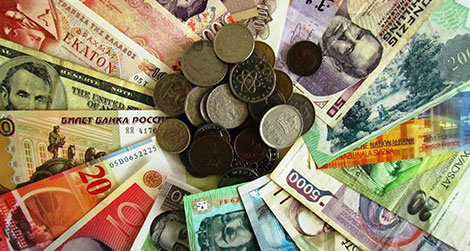My first take away from President Donald Trump’s Rose Garden speech on his new global reciprocal tariff plan is that it worse than expected.
In some cases shockingly worse.
We will have a better idea of market reaction tomorrow but the initial reaction has been negative. Futures on the S&P 500, which allow investors to trade the index outside normal trading hours, slumped nearly 2%, erasing an earlier gain of 0.7% while exchanges were open. Stocks for companies with global supply chains that source a majority of their products from outside the United States took heavy hits in after-hours trading. Apple (AAPL) was down 5.5% as of 5:30 p.m. New York time. Nike (NKE) was down 7.4%. Walmart (WMT) was down 6.42%.
President Trump announced that the new minimum tariff would be 10%. That doesn’t sound too bad, right? But when you look at the details that 10% rate applies to almost no one. The only ones of our major trading partners I saw eligible for that rate were the United Kingdom, Australia, and Brazil.
I found other individual rates shocking. Look at these examples. (Per the latest clarification from the White House, these percentages include the global minimum 10% and any additional country specific tariff. For example, the 20% rate for the European Union is made up of the 10% global minimum and a 10% tariff rate specific to the EU.)
20% for the European Union. Speculation had ranged from 15% to 25%. President Trump claimed that the EU charges the United States 39% in tariff and non-tariff trade barriers. Per the World Trade Organization the figure is 3%.
A new 34% tariff on Chinese goods, on top of the 20% tariff Trump already imposed.
A 24% tariff on goods from Japan.
A 32% tariff on goods from Taiwan.
A 25% tariff on goods from South Korea.
26% on goods from India. This rate is a good example of how made up all these figures are. The administration somehow calculates that India’s average tariff against American goods is 52%. hence the “We’re kind” discount to 26%.
India’s tariffs vary widely between products, from the 70% on motorcycles that Trump mentioned, to zero on other goods. The World Trade Organization estimates that India’s trade-weighted average tariff-—taking into account the value of each category traded—-is about 12%. That’s higher than the trade-weighted American average, which was between 2% and 3%, but it sure ain’t 52%.
But if you want see stunning numbers look at tariffs for the world’s developing economies.
Vietnam is facing a 46% tariff.
Cambodia is looking at 49%.
President Trump began his speech by noting that the new 25% tariff on foreign cars will go into effect tonight at midnight



You did not mention that goods covered by the USMCA trade agreement are not impacted by this new round of tariffs. That part is good news.